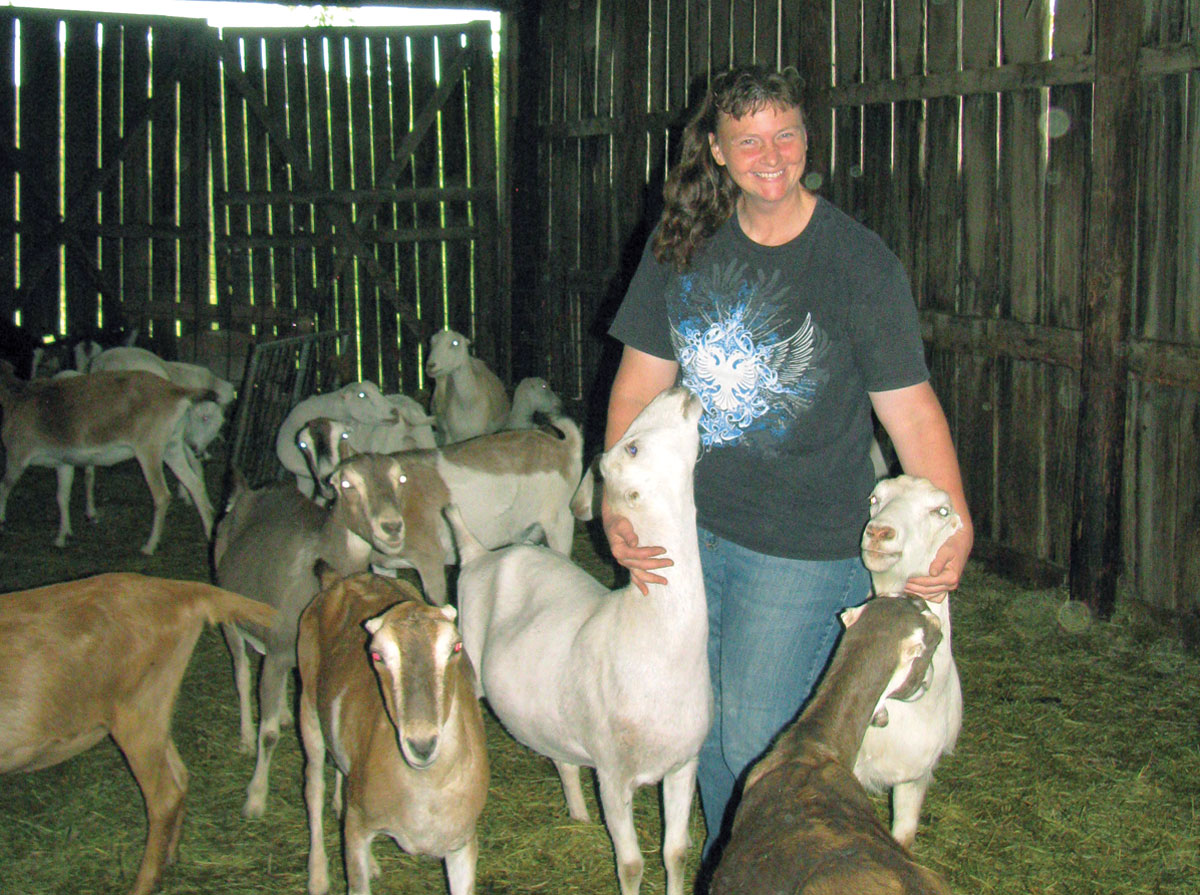
Emily Dixon said she learned from her early mistakes in dairy goat production
Near Mountain Grove, Mo., in Texas County, Emily Dixon rents a modest 30-acre farm and raises Lamancha dairy goats. She generally has between 40 to 60 bucks, does and kids.
Emily got her start with goats “in the wrong way.”
“I started because I went to a swap meet and saw a goat and thought she was pretty,” Emily said. “I took her home and it was just trouble, trouble, trouble after that.”
The problem was, Emily was not ready.
“The worst possible thing you can do when getting goats is to not have proper fencing. They will get into absolutely everything. If you have fencing, they are amazing,” she added.
Emily debunked the popular notion that goats will eat anything.
“Goats will chew on a lot of things, but they are very picky eaters,” Emily said.
She didn’t keep her first goat long.
“I should have bought a healthy, disease-tested animal from a breeder instead of picking one up just on a whim. It was a mistake,” she said.
Emily started over with a clean slate, some good stock and has been hooked ever since.
She started with Nubian dairy goats. Then she got some Boer goats. She had meat goats for 10 years along with the dairy goats, but decided it just wasn’t working. So she cut back to just the Lamanchas.
Emily admits when she first got into goats, with Nubians, she swore she would never own a Lamancha.
“I thought they were ugly. I got my first Lamancha about a year after I had the Nubians, and I was hooked on her personality and her smarts and the milk. I love everything about them. They’re hardy. They milk well. They have personality plus, and they’re very smart,” she stated.
Emily now thinks they are beautiful, but says some people can’t get past the breed not having long ears. They have ears, but they don’t extend. People call them little cinnamon roll ears.
“They hear great. We do not cut their ears off,” Emily explained. “I get that question at the fair all the time. I had one lady that was outraged, ‘Why did you cut their ears off?’”
Emily politely explained they are born that way.
Ozark Jewels is the name of Emily’s herd/farm. She was watching her goats browse in the sun on the hillside, and their coats were sparkling, so the name “just seemed right.”
Emily has had dairy goats for 19 years. She milks them by hand and enjoys it. Right now, she is milking 15. Her sister, Rosalan Dixon, helps.
Emily milks the goats twice a day, 10 months out of the year.
“I like my two months of break, and I’m spoiled, because we also have dairy cows. So I have milk all the time,” she said. “I dry mine off all at once.”
She usually breeds the does in September and October and they start freshening in February and March.
“I start drying them off when they’re about three months bred, which is usually December,” she said.
Dairy goats require a higher quality hay and more grain than meat goats. Emily has alfalfa hay on hand for her Lamanchas.
A milk goat produces anywhere from three-fourths to almost two gallons of milk per day.
“My goal in my does, because I want a doe that’s an easy keeper, is a gallon a day,” Emily said.
Emily does not sell her goats’ milk to people to drink, but she does sell to several people to feed bottle calves.
“We drink it. It is all-around healthy. It’s easier to digest than cow’s milk. Our family has always drunk it raw. I have customers who buy it for kids, calves, and lambs. I feed a lot of goat kids and a lot of calves on it. It raises really nice calves. It can raise more animals than any other milk that’s available,” she stated.
There are always too many dairy bucklings. She uses those for meat. Only the best are retained for breeding.
Emily comes from a large family. She is one of 12 children. So her dairy goats provide milk and meat for the family. “They also provide a lot of fun,” she added.
When looking for a good dairy goat, Emily wants a nice, well-attached udder, just two teats, and more than a half a gallon a day.
“A big well-developed rumen is important,” Emily said. “That goes to how much they can ingest. How much they can ingest goes to how much milk they give.”



